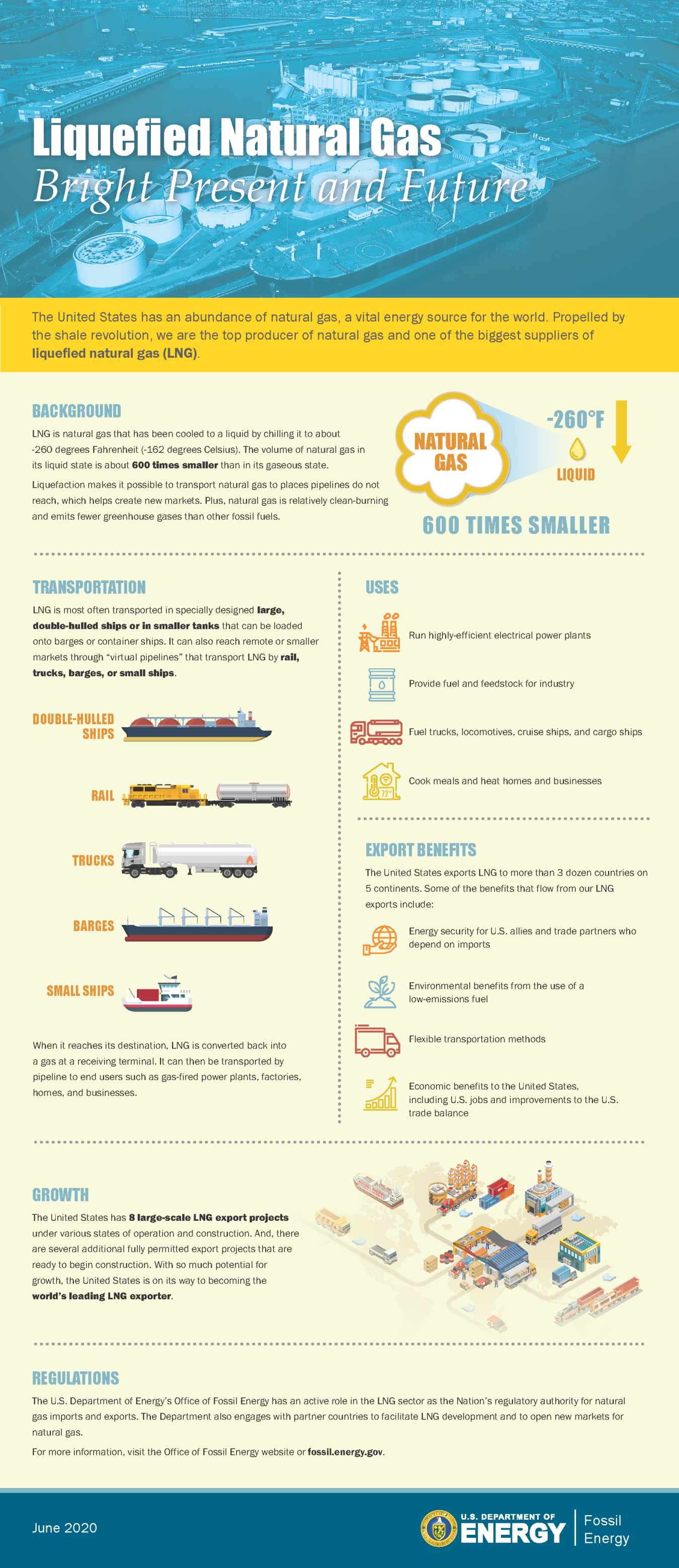Liquefied natural gas (LNG) is natural gas that has been cooled to a liquid state, at about -260° Fahrenheit (or ~162 Celsius), for shipping and stora
Office of Fossil Energy and Carbon Management
January 27, 2021Liquefied natural gas (LNG) is natural gas that has been cooled to a liquid state, at about -260° Fahrenheit (or ~162 Celsius), for shipping and storage. The volume of natural gas in its liquid state is about 600 times smaller than its volume in its gaseous state, making it easier for ocean transport. Transporting natural gas as LNG has helped create new natural gas markets in areas that were not previously accessible because they lack necessary pipeline infrastructure.
In its compact liquid form, natural gas generally can be transported by ship, barge, rail, or trucks in special tankers to LNG receiving facilities around the world. There it is “warmed,” or vaporized, and returned to its gaseous state (called regasification) and transported by pipeline to distribution companies, industrial consumers, and power plants. Smaller portions of LNG received at receiving terminals may be delivered via “virtual pipelines,” (or by rail, truck, or barge) to areas not reached by underground pipelines.
Because natural gas is the least carbon-intensive fossil fuel, many countries are looking to utilize natural gas and LNG to support their environmental goals. Other benefits from LNG trade include:
- Increased energy security via access to a reliable fuel source that can be supplied from multiple countries
- Environmental benefits from the use of a low-emissions fuel
- Ability to monetize the gas from remote offshore fields that would be too technically or economically challenging to develop otherwise
- Flexible transportation methods
- Economic benefits, including the creation of new jobs and tax revenue via the development of LNG and natural gas infrastructure


